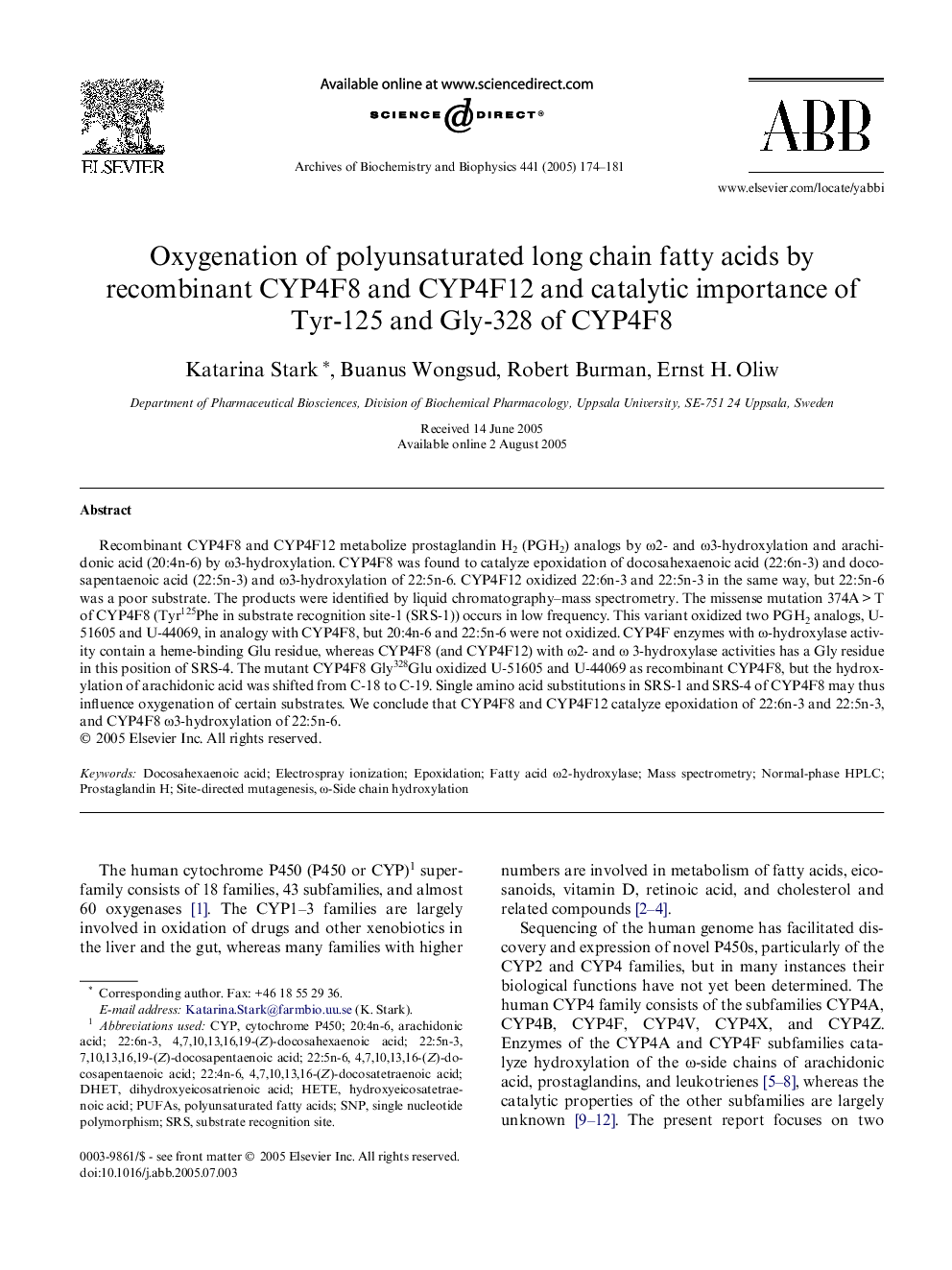| کد مقاله | کد نشریه | سال انتشار | مقاله انگلیسی | نسخه تمام متن |
|---|---|---|---|---|
| 9882126 | 1536540 | 2005 | 8 صفحه PDF | دانلود رایگان |
عنوان انگلیسی مقاله ISI
Oxygenation of polyunsaturated long chain fatty acids by recombinant CYP4F8 and CYP4F12 and catalytic importance of Tyr-125 and Gly-328 of CYP4F8
دانلود مقاله + سفارش ترجمه
دانلود مقاله ISI انگلیسی
رایگان برای ایرانیان
کلمات کلیدی
موضوعات مرتبط
علوم زیستی و بیوفناوری
بیوشیمی، ژنتیک و زیست شناسی مولکولی
زیست شیمی
پیش نمایش صفحه اول مقاله

چکیده انگلیسی
Recombinant CYP4F8 and CYP4F12 metabolize prostaglandin H2 (PGH2) analogs by Ï2- and Ï3-hydroxylation and arachidonic acid (20:4n-6) by Ï3-hydroxylation. CYP4F8 was found to catalyze epoxidation of docosahexaenoic acid (22:6n-3) and docosapentaenoic acid (22:5n-3) and Ï3-hydroxylation of 22:5n-6. CYP4F12 oxidized 22:6n-3 and 22:5n-3 in the same way, but 22:5n-6 was a poor substrate. The products were identified by liquid chromatography-mass spectrometry. The missense mutation 374AÂ >Â T of CYP4F8 (Tyr125Phe in substrate recognition site-1 (SRS-1)) occurs in low frequency. This variant oxidized two PGH2 analogs, U-51605 and U-44069, in analogy with CYP4F8, but 20:4n-6 and 22:5n-6 were not oxidized. CYP4F enzymes with Ï-hydroxylase activity contain a heme-binding Glu residue, whereas CYP4F8 (and CYP4F12) with Ï2- and Ï 3-hydroxylase activities has a Gly residue in this position of SRS-4. The mutant CYP4F8 Gly328Glu oxidized U-51605 and U-44069 as recombinant CYP4F8, but the hydroxylation of arachidonic acid was shifted from C-18 to C-19. Single amino acid substitutions in SRS-1 and SRS-4 of CYP4F8 may thus influence oxygenation of certain substrates. We conclude that CYP4F8 and CYP4F12 catalyze epoxidation of 22:6n-3 and 22:5n-3, and CYP4F8 Ï3-hydroxylation of 22:5n-6.
ناشر
Database: Elsevier - ScienceDirect (ساینس دایرکت)
Journal: Archives of Biochemistry and Biophysics - Volume 441, Issue 2, 15 September 2005, Pages 174-181
Journal: Archives of Biochemistry and Biophysics - Volume 441, Issue 2, 15 September 2005, Pages 174-181
نویسندگان
Katarina Stark, Buanus Wongsud, Robert Burman, Ernst H. Oliw,